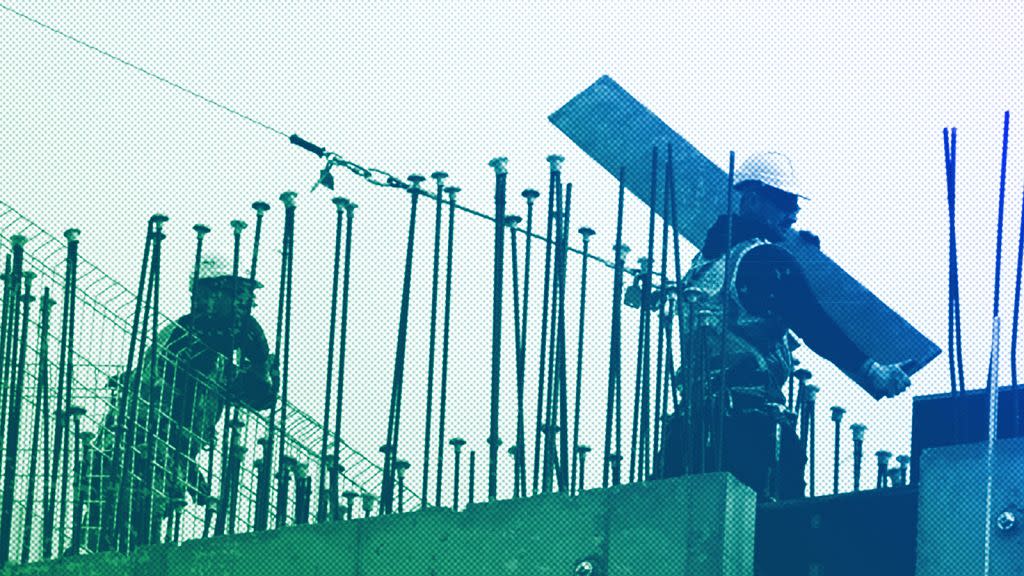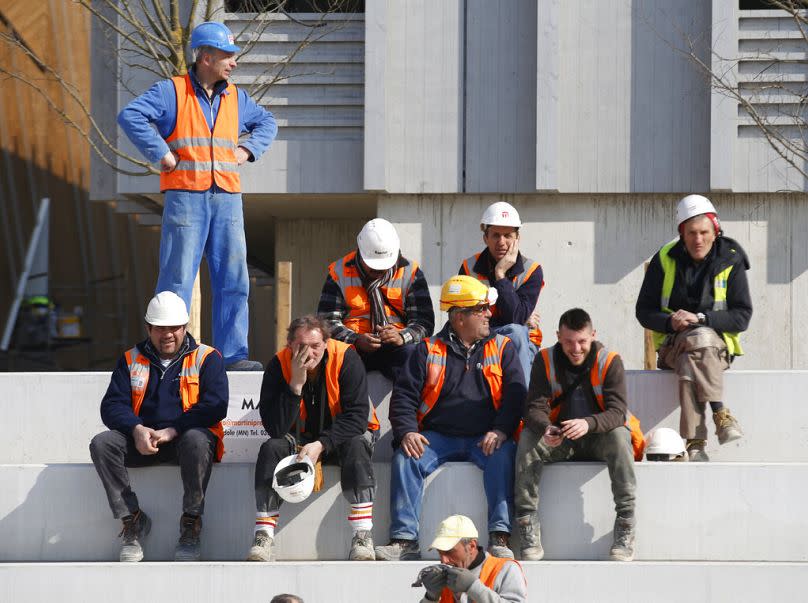Migration policies must improve to meet Europe’s green building goals

Have you tried getting a plumber in recently? So has Europe’s construction sector – without much luck.
The sector needs to carry out a massive wave of renovations in the coming years to meet the EU’s climate goals. This includes changing gas boilers for heat pumps and insulating older buildings, all while keeping up with demand for new homes.
Construction firms will need to recruit migrant workers because there aren’t nearly enough people with the necessary skills in domestic labour forces.
But they’re being held back by immigration policies that aren’t fit for purpose. A rethink – including provisions for new “green visas” – is needed.
Last year, the EU revised its Renewable Energy Directive in the wake of Russia’s invasion of Ukraine, requiring 42.5% of its energy consumption to be renewable by 2030. To achieve this, countries must increase their renewable power generation while also improving energy efficiency to reduce their overall consumption.
Retrofitting buildings is a large part of this task since about 40% of the EU’s energy consumption takes place in buildings, many of which are old and energy-inefficient. Progress so far has been slow: the renovation rate needs to triple for Europe to meet its 2050 target, researchers have found.
A lack of skilled workers is at the root of the problem. Trade unions say that Europe’s construction sector will need more than two million new workers by 2030.
While recruiting and training more construction workers domestically can be part of the solution, migration will also be required to plug the gap.
And the EU will need to look beyond its borders: the traditional flow of construction workers from the likes of Poland and Romania to other EU countries has slowed down as they have become richer – indeed, they themselves increasingly rely on migration to fill construction sector jobs.
Lessons from Ireland
My research on this issue in Ireland for ODI, with Ambassador David Donoghue, contains many lessons for other European countries. We found that the construction sector faces immense demand for both retrofits and new buildings and that it’s unable to recruit enough workers to meet this demand.
Furthermore, much-needed construction workers are often frozen out of the most advantageous visa category, which is based on academic qualifications. Even with visas now available for the technical trades, small construction companies – which account for most of the sector – often lack the administrative capacity to use the immigration system.

The government has committed to retrofitting nearly 450,000 buildings by 2030, as well as building about 33,000 new homes per year to deal with a politically sensitive housing crisis.
It says it will need more than 50,000 new workers in the construction industry by 2030; the Irish Green Building Council (IGBC) puts this figure at more than 120,000 workers, in a population of just over 5 million.
Recruiting locally is a major challenge for Irish construction firms. In an overall tight labour market, they are further hindered by the sector’s widespread public association with low academic achievement and financial insecurity.
A member of an industry group told us: “The feedback we’re getting from the industry is that skills and labour are the biggest challenge to achieving our targets.”
While trying to make the sector more attractive domestically, the Irish government has also acknowledged the need for migration, for example, by broadening the eligibility of the General Employment Permit in 2021 to include most construction roles.
But the response has been underwhelming, with the construction sector still making relatively little use of the immigration system.
Outdated immigration systems
One reason for this is the structure of Ireland’s construction industry: 95% of construction firms are classed as "micro-enterprises" with fewer than 10 employees and, presumably, limited administrative capacity. This is a pattern that is likely to be repeated across much of the EU.
At the same time, the government’s immigration system is built on an outdated concept of skilled labour that is wedded to the academic hierarchy and undervalues technical trades.

Moreover, our research found that the government looks to non-EU countries only for construction workers with specialist skills and assumes that manual labour will be supplied from within the EU, even though all the evidence points to far less availability of these workers from EU countries.
This pattern is repeated in Ireland’s international recruitment efforts, such as when government ministers accompany businesses on international roadshows.
Europe is facing a shortage of skilled workers. The Basque experience could be the answer
Germany's new immigration law is making it easier for foreign workers to move there
A visit to South Africa in June 2023, for example, focused on roles such as engineers, construction managers and quantity surveyors, while the most critical shortages are among craft workers (such as plumbers, electricians, carpenters, roofers, and insulation operatives) and labourers.
Weakness that might rattle the foundations
One powerful step that Ireland could take to attract craft workers would be to make these occupations eligible for a Critical Skills Employment Permit – its most privileged visa category, which offers enhanced rights for migrant workers, such as the right for family members to also work, and less bureaucracy for employers.
The Critical Skills list is driven as much by professional or academic qualifications as it is by labour market demand.
In the construction sector, for example, civil engineers, quantity surveyors, and construction project managers are in this category, but bricklayers, plumbers, and pipefitters are not.
Similar lessons can be applied to other European countries, most of which have a similar bias against technical trade workers embedded in their immigration systems. If not addressed, this weakness will continue to hamper the construction industry and harm Europe’s green transition.
European construction industries need reforms to migration policies to offer straightforward, legal pathways for technical trades workers to enter their countries and perform much-needed jobs. It’s now up to policymakers to heed their calls in the service of Europe’s green transition.
Claire Kumar is Senior Research Fellow at ODI Europe.
At Euronews, we believe all views matter. Contact us at view@euronews.com to send pitches or submissions and be part of the conversation.


